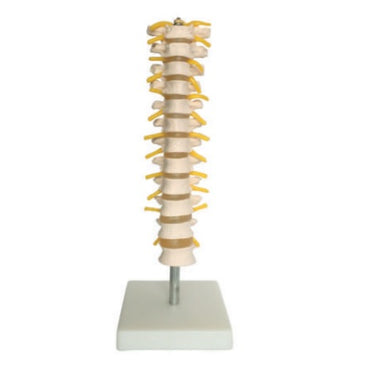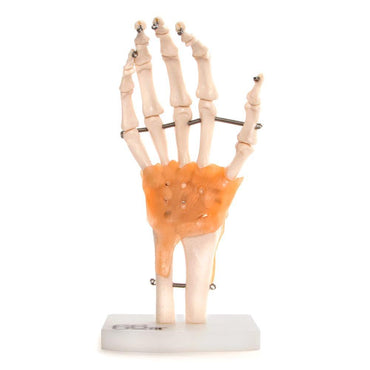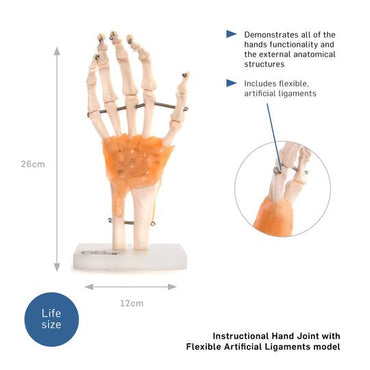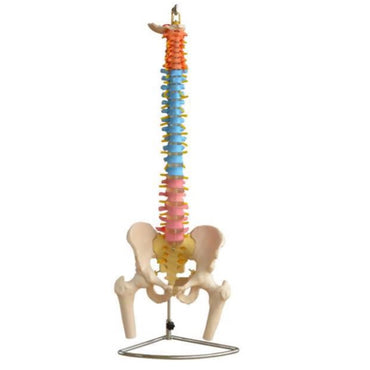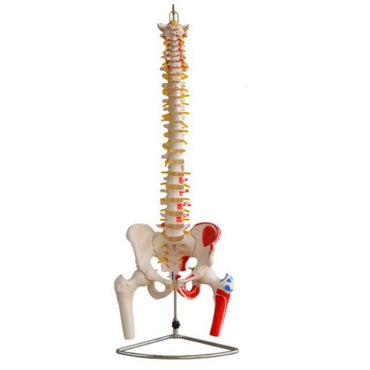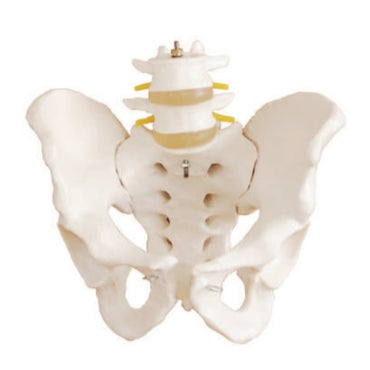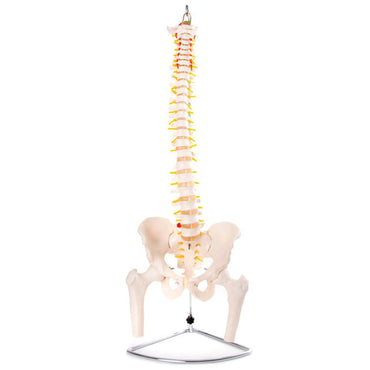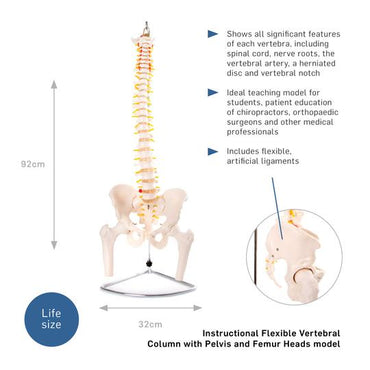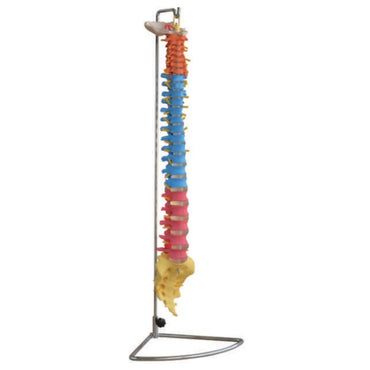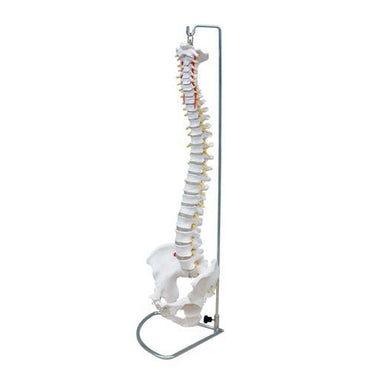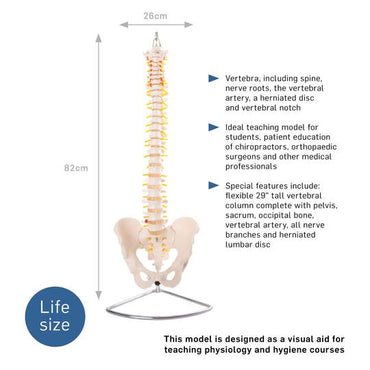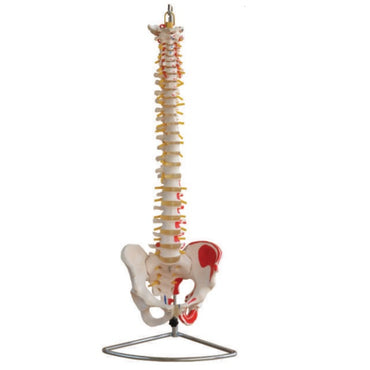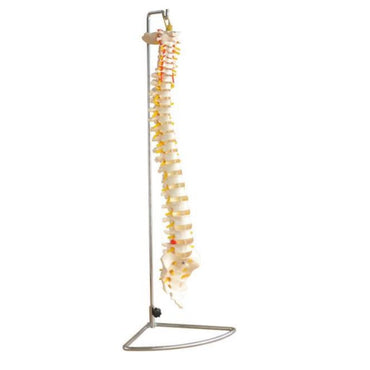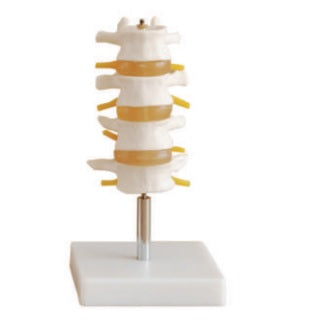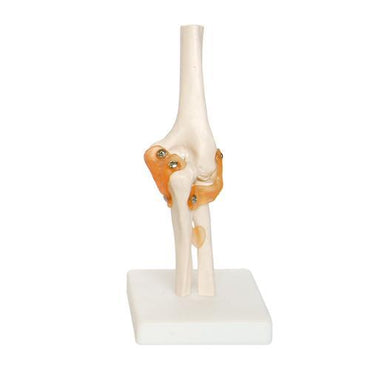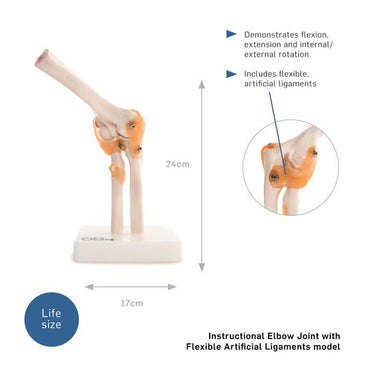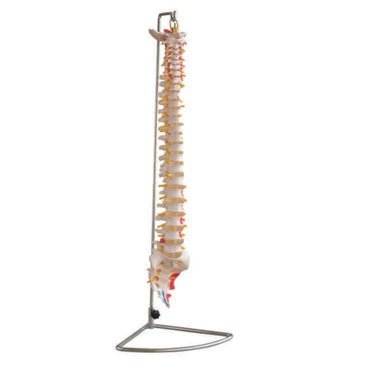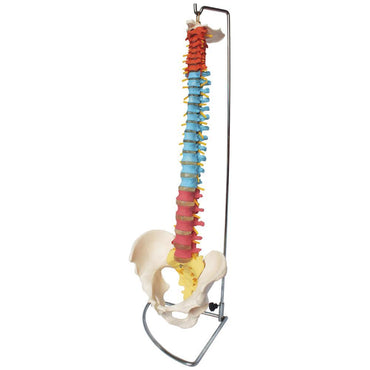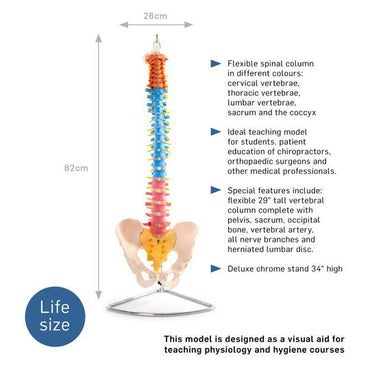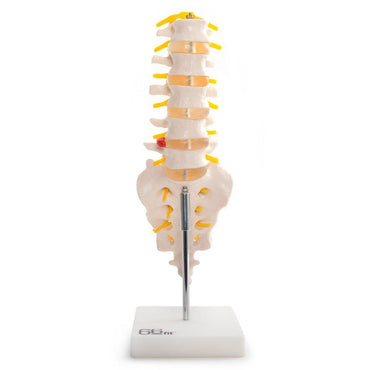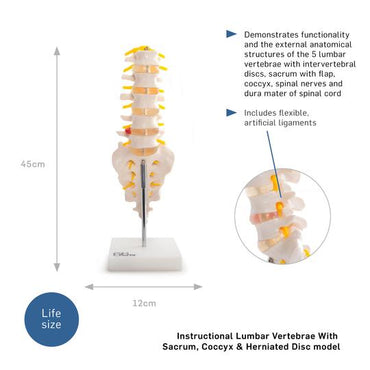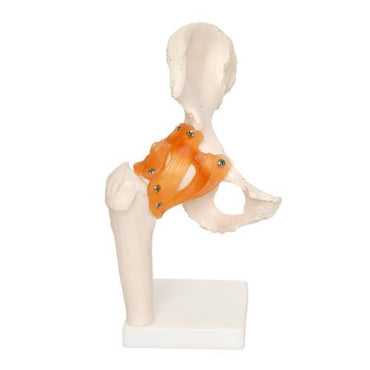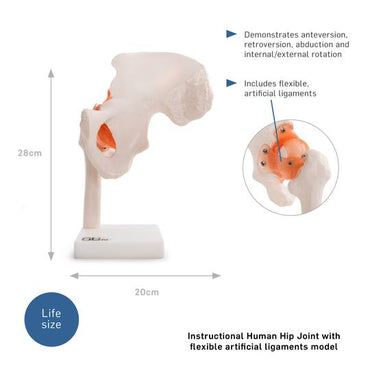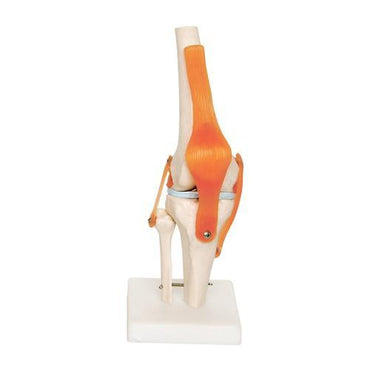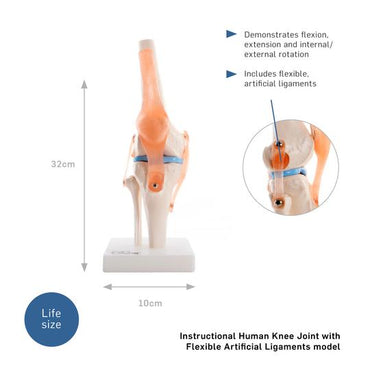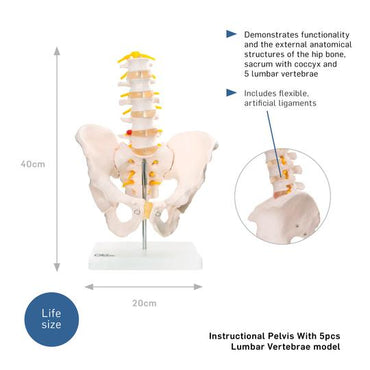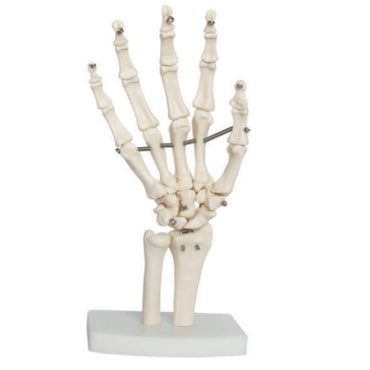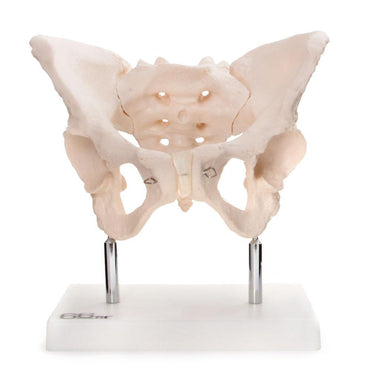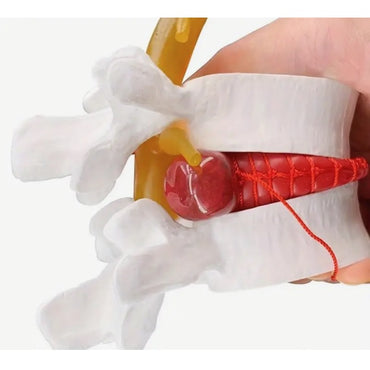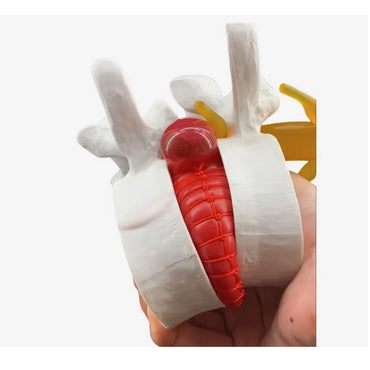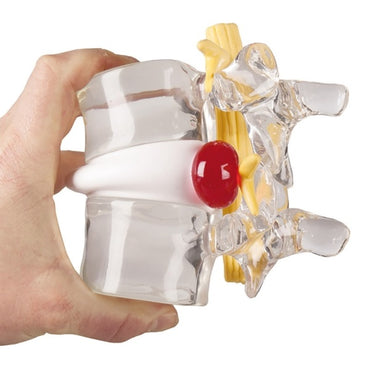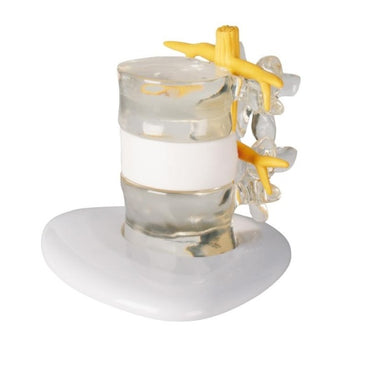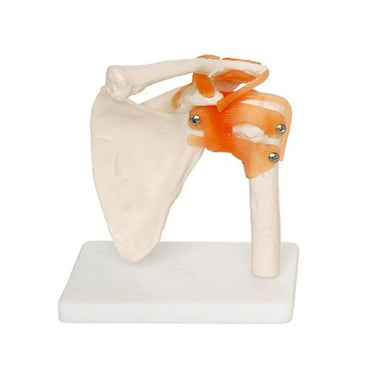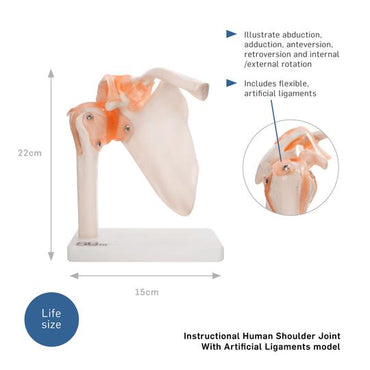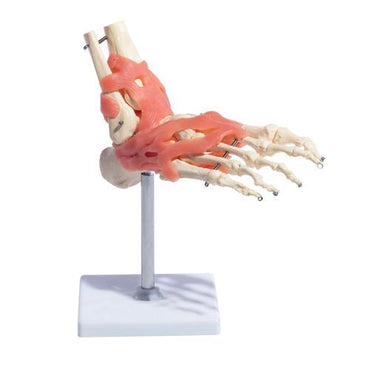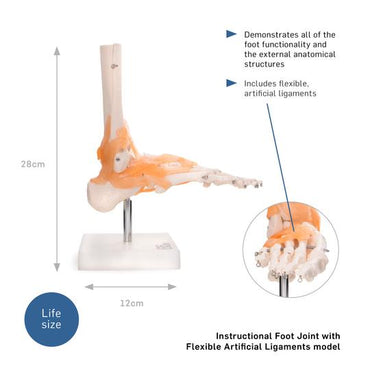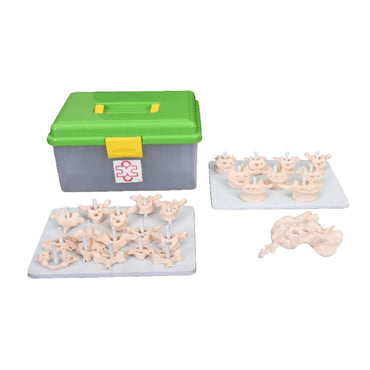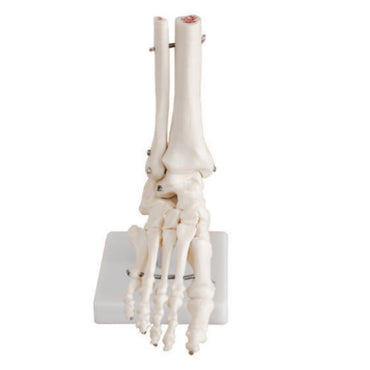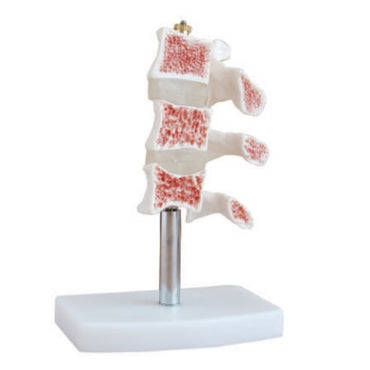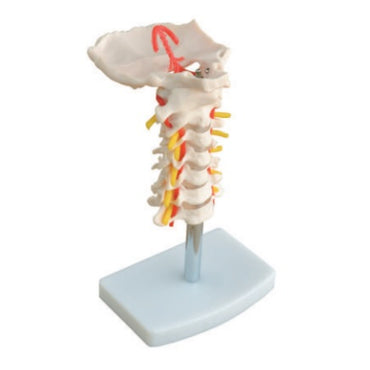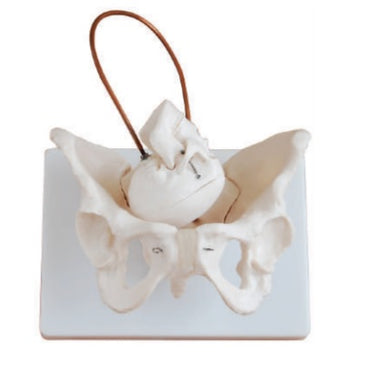Anatomical Joint Models
When it comes to anatomical models, some of the most popular are anatomical joint models. As the name suggests, these are models which accurately show the joint, how it connects, and how it moves. they are great for increasing your understanding of the human body and what the problem is that your client is trying to solve. Here at Physiosupplies, we have an extensive range of 66fit anatomical joint models for you to buy today.
Anatomical joint models in Ireland
The variety of joint models available mean that you can refresh your knowledge of the joints in the body with ease. The quality of 66fit models ensures that you’ll know everything you need to know.
Made from washable PVC, you can easily wipe down the model after each use. You can shop our full range above or simply search for the items you need, including vertebrae joint models.
Orders over €70 get free shipping in Ireland. Got questions about your order? Our dedicated team is ready to answer your questions, so get in touch now.
FAQs
How do joints work?
Almost all joints work in the same way. They link one bone to another, with ligaments and cartilage to allow the connection to move in a specific way. As the muscles contract, they pull on the joints, which enable us to move.
What are common joint problems?
One of the most common joint disorders is osteoarthritis, which is when the cartilage between joints wears down and causes the bones to rub together. This can lead to stiffness, swelling, and pain. Other factors, such as injury, can cause problems in the joints, especially if left untreated. A physiotherapist or other healthcare professional will be able to advise you on exercises to help relieve joint pain.
How many types of joints are there?
There are three main types of joints in the human body, typically categorised by their movement. These are synarthroses (immovable) such as the plates of the skull, amphiarthroses (slightly moveable) including the vertebrae of the spine, and diarthrosis or synovial (freely moveable) which are the most common.
How many types of freely moveable joints are there?
There are six different types of diarthrosis or synovial joints in the human body. Ball and socket joints allow movement in all directions, such as your shoulder or hip joint does. Condyloid joints allow movement without rotation, like your jaw or finger. Gliding joints, also known as the plane join, allow limited movement, such as your wrist. Hinge joints, like the knee, work in one direction. Pivot joints are where one bone swivels within a ring formed by a second bone, such as the join between vertebrae in your neck. The saddle joint, such as in the base of your thumb, allows movement but not rotation.

